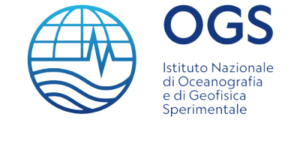Innovative Sensors
TRANSFORM² pioneers the development and deployment of advanced seismic and geodetic instruments, designed to provide new opportunities in monitoring near-fault activity. This concept introduces a new generation of sensors and analytical solutions in basic and applied research related to earthquake processes. These new technologies will contribute to the design of innovative studies and the opening of new perspectives to forecast natural disasters and mitigate associated risks and impact Key innovations include:
Optical Seismometers
TRANSFORM2 will further develop and diversify the use of innovative, high-resolution optical seismometers, based on Fabry-Perot (FP) interferometry, originally developed by IPGP in close collaboration with ESEO (Engineering School, Angers, France).
These type of instruments are dedicated for
installation at the termination of pluri-kilometric optic fibers in harsh environments and their generic advantage is to separate the interrogator from the sensor, the latter
having no electronics and being installed in place where commercial electrical instruments would be much more
costly and/or difficult, if not impossible, to install and maintain in the long term.
Advanced acoustic emission sensing
Our goal is to improve earthquake monitoring capabilities by integrating, deploying, testing, and validating innovative acoustic sensors crafted from ferroelectric materials. These sensors are designed to detect a broad spectrum of frequencies produced by pre-seismic activities and will be operated as functional stations, in real-time.
Low-cost autonomous seismic devices
TRANSFORM2 will develop and demonstrate a novel integrated, compact, and
relatively low-cost system suitable for installation operate stations in remote places such as high Alpine environments or indeed to rapidly deploy stations in the
case of an aftershock sequence.
The proposed system combines a sensor, a digitiser, a battery bank, and a cellular modem in a single
waterproof 'bullet’-like housing that will be shallow buried.
High-precision geodetic sensors
Geodetic instrumentation improvements will be tested in the laboratory to increase the geodetic detectability
level. The most precise solutions will be investigated through the whole deploying chain for a reliable state-of-
the-art multi-constellation GNSS receiver in high-rate acquisition mode (defined as having a sampling
frequency of 1Hz or more).
A series of tests will be performed in the laboratory to assess the best performance
that can be achieved, at first order, using auxiliary equipment (external, rubidium clock, tiltmeters on the
antenna plane, co-located strong motion accelerometers), and improve the mounting basement. The
performance will be evaluated in terms of cost, autonomy, achieved long-term and short-term displacement
and kinematic accuracy and (near) real-time or offline operation.
Geochemical Sensors
TRANSFORM2 will develop an innovative, field-deployable, geochemical instrument, that will automatically measure the chemical and isotopic compositions of fluids (e.g., noble gases, major gaseous components, C isotopic compositions of CO 2 ) with a sampling rate of at least one sample per day.
Subscribe our newsletter

















